Issyk-Ata
Issyk-Ata Gorge
Issyk-Ata Gorge is located 60 kilometers southeast from Bishkek. In Kyrgyz language, Issyk means “warm” and Ata means “father”. The place is famous for its Soviet-era sanatorium that is one of the oldest in Central Asia and has been running since 1895. The sanatorium is settled amongst Tian-Shan spruces and alpine herbs, 1 775 m from sea level next to the tumultuous Issyk-Ata river. The name “Issyk-Ata” came from the River, which is providing cool waters down the gorge towards the Chuy Valley. Issyk Ata is mostly not included in our Kyrgyzstan tours, but it can be easily included and is a nice place to visit for any hot springs enthusiast or the ones interested in hikes to waterfalls.
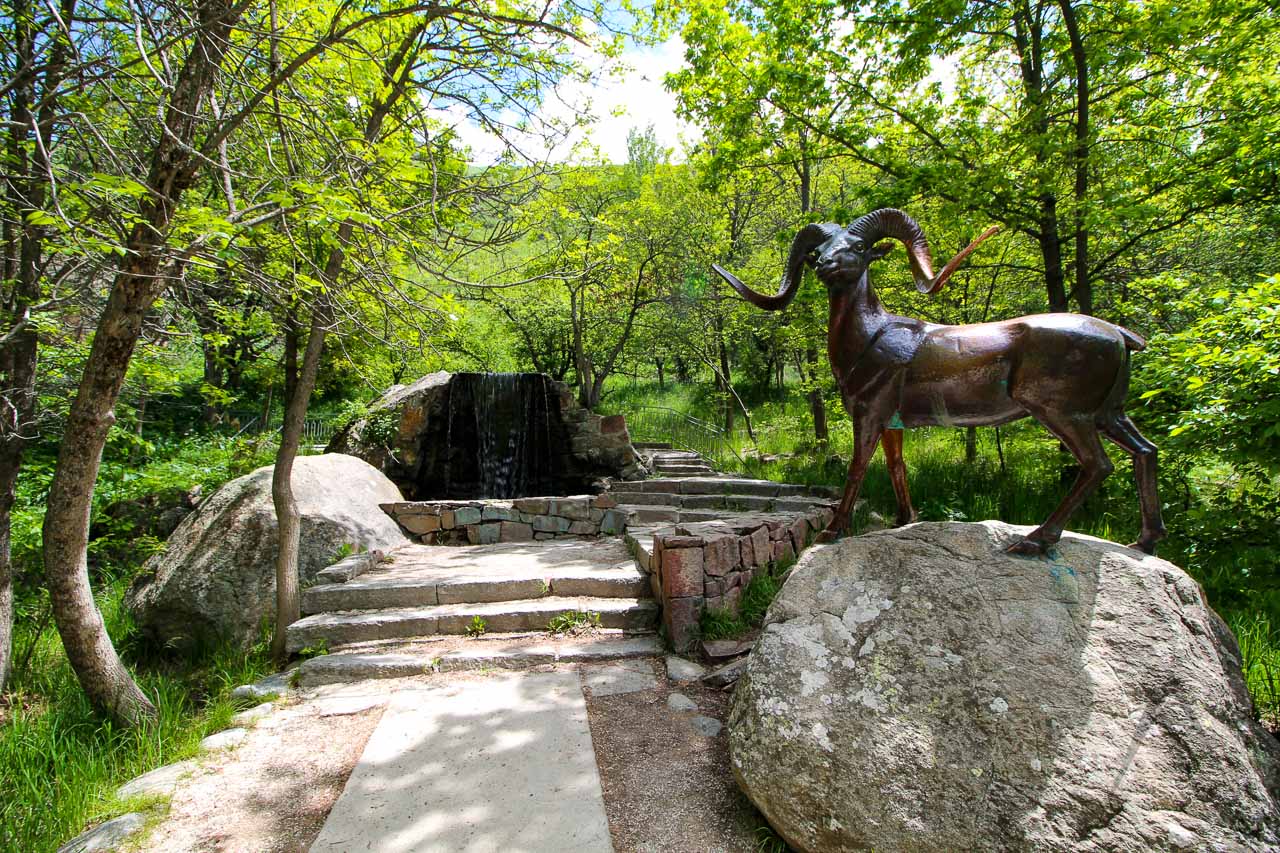
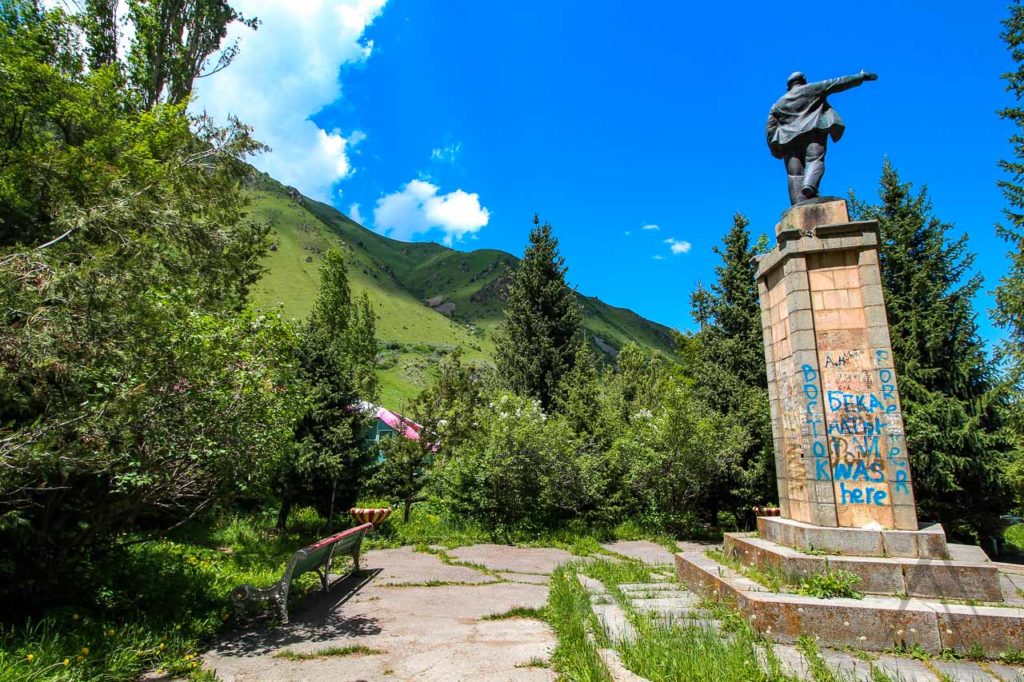
For the first time visitors, sanatorium appears abandoned and gives the impression that you are back in the Soviet time with half-ruined and half working buildings and statues of Lenin surrounded by star marks, a true Soviet relic park. There is a spirit of the Soviet Union in each building as any other sanatorium with the former USSR but here it is very well preserved.
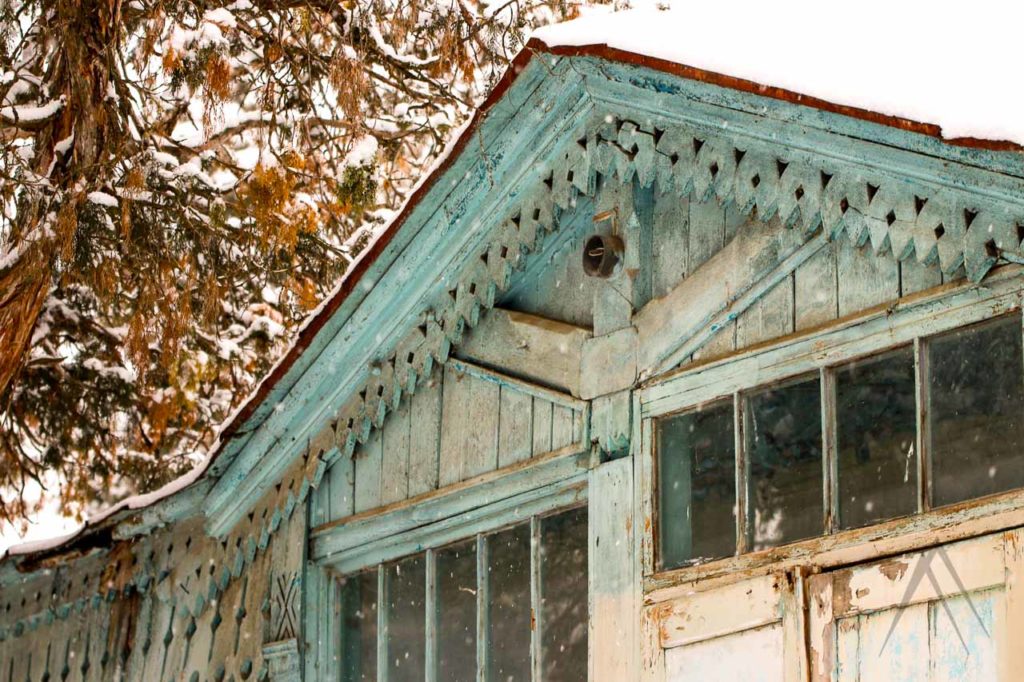
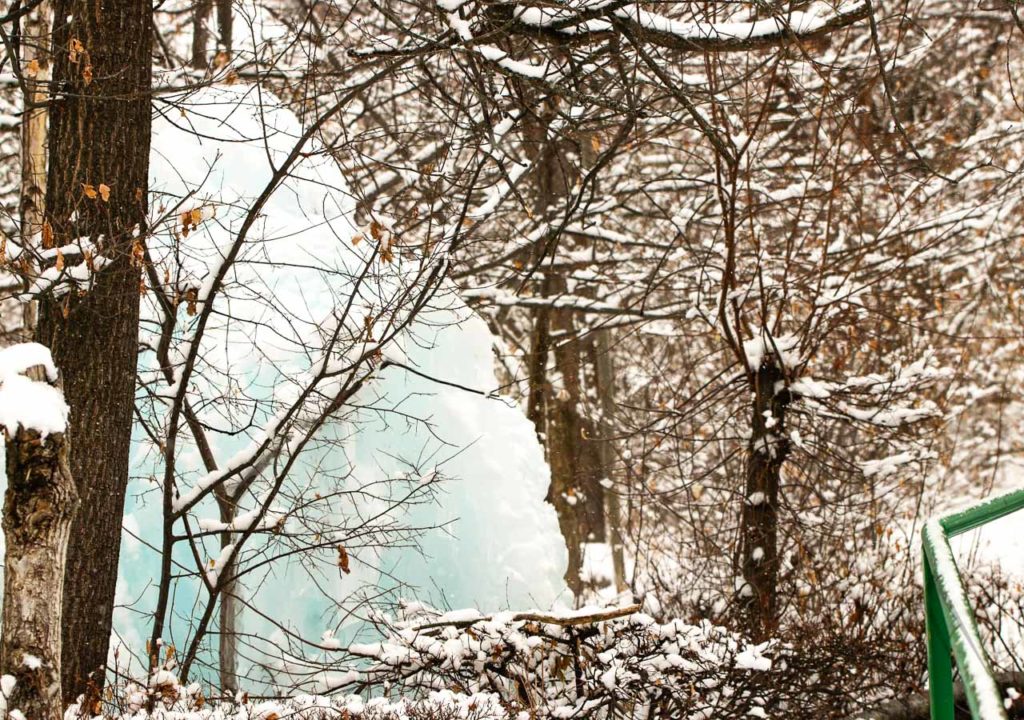
Next to the sanatorium there is a large pool at the hill that was renovated few years back. There is also a new smaller outdoor pool operating on the other side of the river, next to a new hotel. The hotel mostly serves the patients of the sanatorium, providing them privacy while receiving the treatments of the sanatorium. The swimming pools are open for all visitors and cost about 200 som per person.
The pool is quite nice but the changing rooms do not have heating so it might be a bit chilly in the winter time after spending some time in the hot pool of water. We would still recommend trying the pool especially during the winter time when you can enjoy the steamy water combined with the cold fresh mountain air.
Issyk-Ata Hot Springs
The crystal clear water is said to have magical healing properties despite its sulphuric taste and smell. The sanatorium is still popular within the local middle-age people who come there to straighten their health. Many treatment programs are still functioning, relying on the hydro-sodium thermal water and nutrient-rich peat mud.
These mineral geothermal hot springs are believed to contain all types of magical healing powers and are renowned for being able to cure many illnesses. This power was even discovered by the ancient people. There is a picture of Buddha-healer created in stone, back to the period of the 2nd -7th centuries within the Issyk-Ata area. There are one hundred and thirty sources of mineral water, half of which have a constant water temperature of 38-50 degrees Celsius. The largest and most famous source is near the rock with the Buddha, that produces eight liters of water per second with a temperature of 54.5 degrees around the year. You can taste the different types and strengths of waters in the area.
Hiking to the Issyk Ata Waterfall
Issyk-Ata is ideal for a day trip as it’s nearby and accessible in two hours from Bishkek. The gorge has a breathtaking picturesque view along all the way with the snow capped peaks surrounding it. You can have a picnic and enjoy nature by hiking upwards next to the rapidly flowing river. A small trail leads to the first and nearest waterfall with the height of 8 m (2100 m above sea level) about 2 km from the sanatorium. It is is a popular destination visited by tourists, patients, and guests of the resort. The same trails go a lot further than the waterfall, for at least 10 kilometers if you have the time and feel more adventurous.
The hills of the gorge are covered with forests and pastures, where juniper, mountain ash, and various shrubs grow. Make sure you are properly dressed because track might be a bit intense especially in the spring time when all the snow has not yet melted. The weather can also be totally different from Bishkek and change quickly into thunders in the mountains. If you decide to venture further make sure to have water and snacks with you. There are no services available after the sanatorium area.
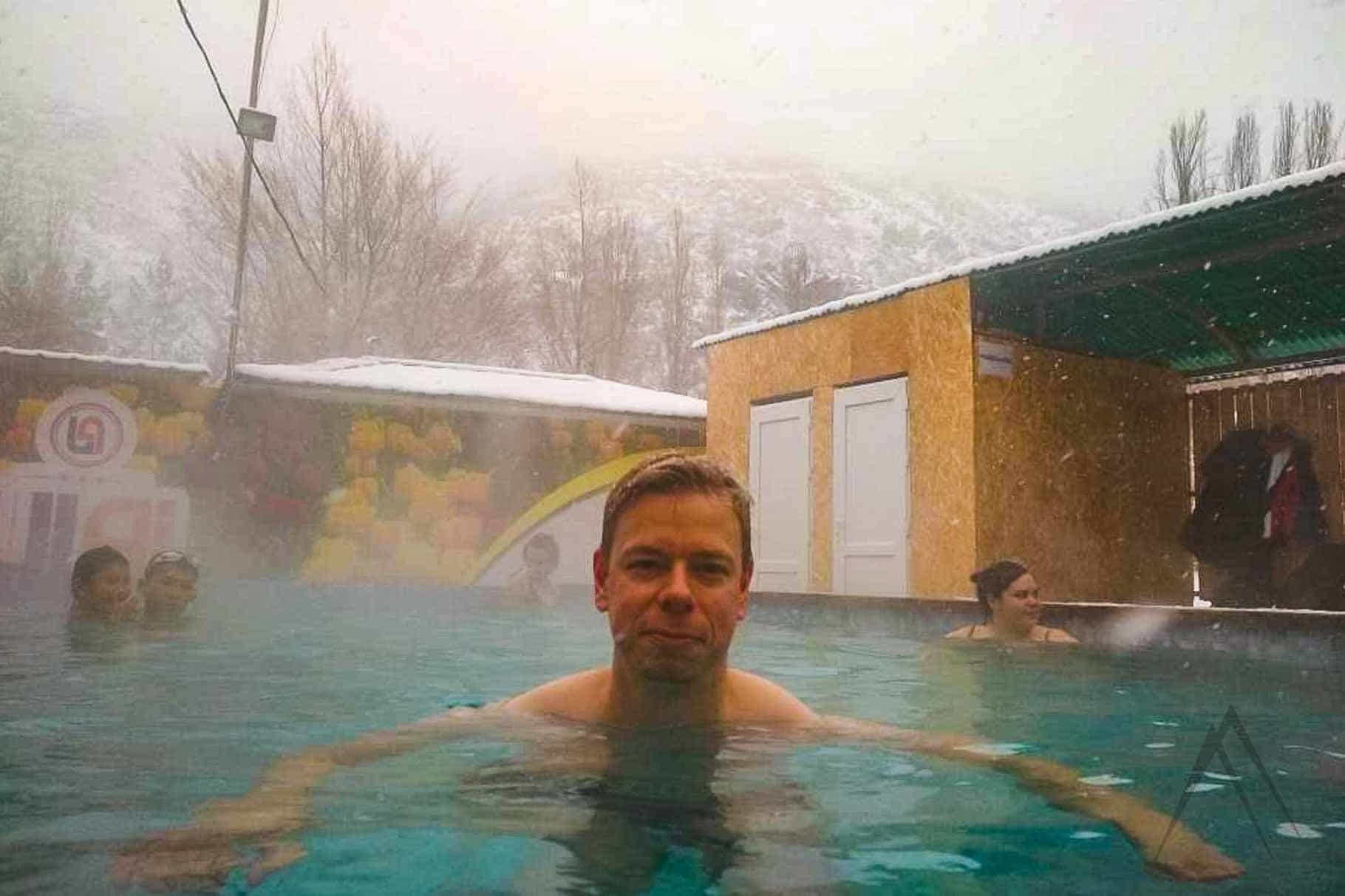
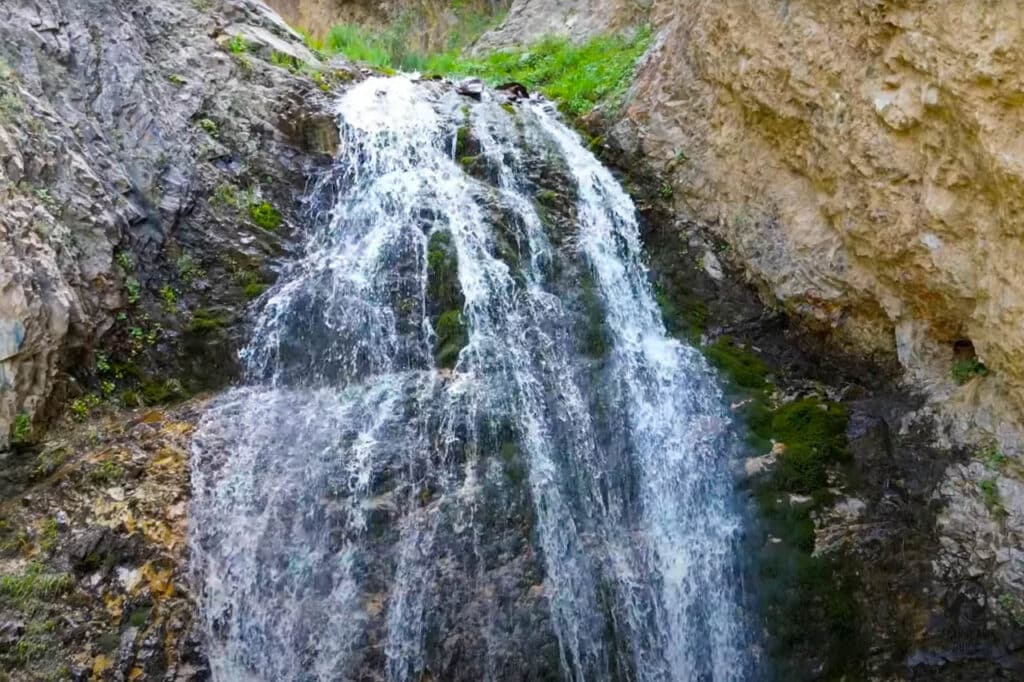
Travel to Issyk-Ata
There are two ways to reach to Issyk-Ata. The Southern one goes through the villages and hills with beautiful views. Local taxi drivers usually know this way. We recommend to ask for it especially in the spring and early summer times as the area is extremely green during those times. The second, Northern route goes in the Chui valley through Kant. On the way you can see a lot of Kyrgyz agriculture and the road is a bit better. You can leave Bishkek in the morning and spend the entire day in Issyk-Ata by visiting the sanatorium, swimming in the hot spring, and hiking to the waterfall.
You may hire a taxi and pay about 2000 som (25$) for both ways if you want to reach fast and comfortable. If you are on a budget the best way is to take marshrutka for about 1$-2$ both ways. You can find marshrutka from Bishkek Eastern Bus Station.
The road is pretty curvy while passing several villages in the Chuy Valley, you will reach Issyk-Ata in less than two hours. The marshrutka’s leave on a regular schedule at the Eastern Bus Station in Bishkek from 8.30 till 6.00 PM. Don’t forget to check the return schedule from the marshrutka driver, so you can get back to Bishkek by the end of the day.
Issyk-Ata Sanatorium History
Initial constructions of the sanatorium began in 1895 when the Red Cross Directorate built the first building for patients in several wooden tents for bathing people at natural springs. The first geological survey and chemical analysis of mineral springs were performed by mining engineer G. A. Argentov and the chemist H. Teich.
Later in 1918 Red Cross constructed two small buildings – a hostel for patients and a building with 12 baths. In the period from 1919 to 1931, the resort frequently passed from one department to another and nobody took care of it. The active development started in 1931 by the Soviet Union for the working people, while it was given to the Kyrgyz sanatorium Administration of the Kyrgyz SSR. From 1931 to 1939 new campuses were built, one polyclinic, a dining room, and a bathroom building named “Arashan”. During the same years, the water supply was brought to the region and the territory was decorated. During WW2 construction was suspended and opened a new department for the soldiers, who were brought from hospitals in Frunze and other cities of Central Asia.

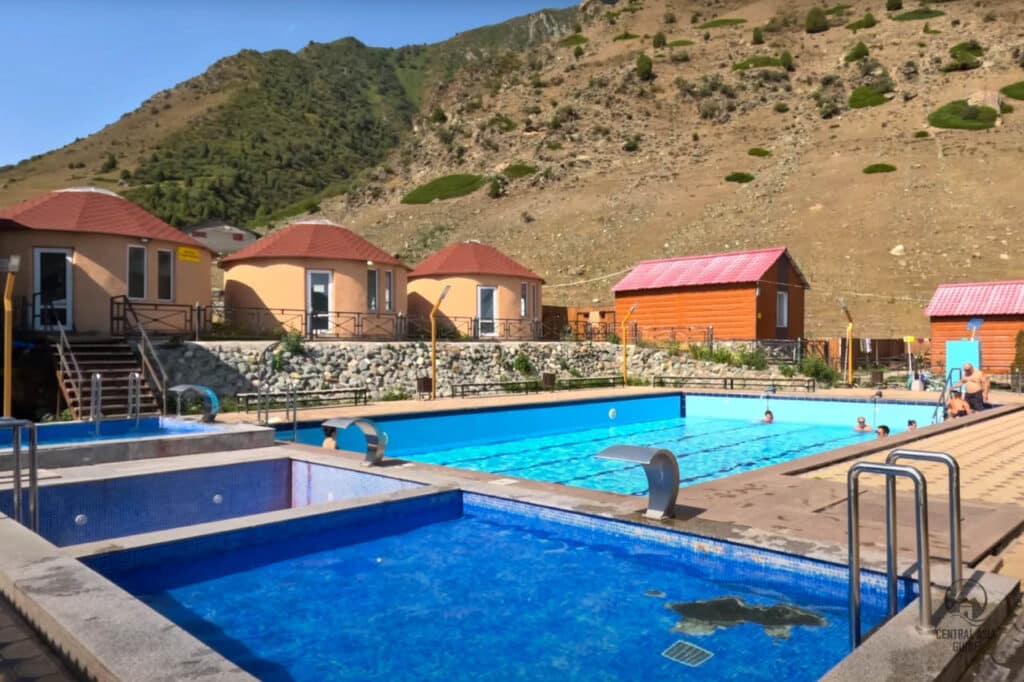
Many soldiers were healed and sent back to war but some of them remained forever in the mass grave, placed on a hill above the dining room. Until 1957, the resort was seasonal and planned for 200 people but with the reconstruction of a new sleeping campus the sanatoria could host another 100 places and also turned to year-round operation.
Between 1957 to 1982, the resort built: A three-story dormitory building for 117 people, a three-story polyclinic with all the necessary rooms for up to 400 visitors, a two-story building for mud bath building for 20 baths and 14 mud beds with hydropathic and gynecological rooms, a new culture building with an auditorium with 400 seats, a library and a billiards room. Issyk-Ata sanatorium was a notable treatment center for bone and muscle ailments, esoteric gynecological cases, and radiation illnesses that followed the disaster at Chernobyl. Today, the resort has the capacity for 800 people.